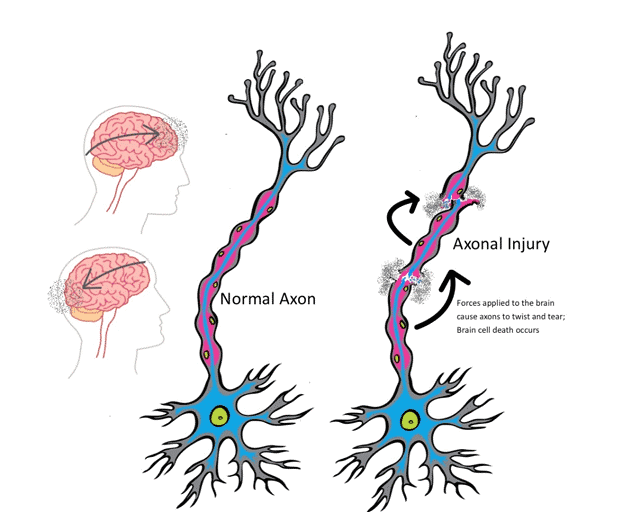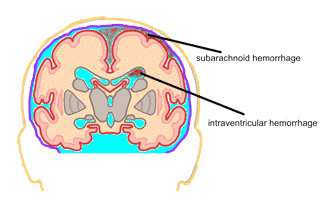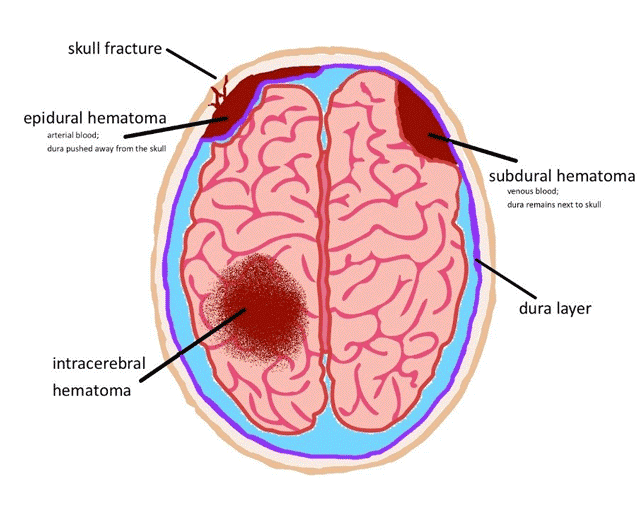An acquired brain injury (ABI) is a medical condition that changes how the brain works. An ABI usually happens after childhood. There are 2 types of ABI:
- a traumatic brain injury
- a non-traumatic brain injury
With both types of ABI, there is often swelling of the brain (called cerebral edema).
Swelling of the brain
When you hit your thumb with a hammer, it swells. Your brain also swells when it gets:
- injured (has trauma)
- gets inflamed (irritated) because of a change in your body’s chemistry, an infection, or other medical conditions (non-trauma)
Normally, there is a balance of brain tissue, cerebrospinal fluid (CSF), and blood within the brain. The skull is made of hard bone. So when the brain swells or there is more blood or CSF in the brain, it raises the pressure inside the skull (called intracranial pressure or ICP).
Pressure in the brain can be dangerous as it lessens the amount of blood going to the brain. This can also damage the brain because it gets less oxygen.
Traumatic brain injuries
Traumatic brain injuries involve physical trauma, like a head injury from an accident or having brain surgery.
Closed head injury
The brain may hit the skull at the point of impact, bounce against the other side of the skull, and twist quickly. This is also called a closed head injury.
A brain contusion is a type of closed head injury. It’s a bruise to the brain, just like a bruise you get if you bump your knee.
Open head injury
An open head injury is when the dura mater (the outer layer of the meninges) gets damaged. If there’s a break (fracture) in the skull, CSF can leak. This most often happens when there is a fracture at the base of the skull (called a basal skull fracture).
A penetrating brain injury is a type of open head injury. This happens when an object, such as a bullet or knife, pushes the skull into the brain. If the skull pieces push into the brain covering, it’s called a depressed skull fracture.
Diffuse axonal injury (DAI)
A diffuse axonal injury is one of the most common types of traumatic brain injury. With a DAI, there is damage to a larger area of the brain.
When there’s an impact, the brain moves around inside the skull. This can cause the brain tissue to stretch and tear. The axons of brain cells (neurons) twist, stretch, and snap. As some of the injured brain cells die, they release chemicals that irritate the surrounding brain tissue and cause it to swell (Figure 6).
 Figure 6: Axon twisting after an impact
Figure 6: Axon twisting after an impact
Image credit: Calgary Brain Injury Program
Axons connect brain cells. When they’re injured, messages can’t travel from one part of the brain to the other as quickly.
A way to think about it is when the main road through a city is closed. You can still drive across the city, but it takes much longer because you have to travel on narrower, slower routes. You also need to learn the new route. This is what happens with a DAI.
Hematoma
When the brain shakes a lot or twists, brain tissue tears. If blood vessels break, there is bleeding inside the brain. This can cause a collection of blood (called a hematoma or hemorrhage) to form. This blood can build up and put pressure on the brain (Figure 7).
- An epidural hematoma is when there is a collection of blood between the dura layer and the skull.
- A
subdural hematoma is a collection of blood under the dura layer.
- A
subarachnoid hemorrhage is a collection of blood under the arachnoid layer.
- An intracerebral hematoma is bleeding anywhere inside the brain.
- An intraventricular hemorrhage is bleeding into the ventricles.
 Figure 7: Types of bleeding in the brain
Figure 7: Types of bleeding in the brain
Image credit: Calgary Brain Injury Program  Figure 8: Types of bleeding in the brain
Figure 8: Types of bleeding in the brain
Image credit: Calgary Brain Injury Program
Non-traumatic brain injuries
A non-traumatic brain injury can be caused by:
- the brain not getting enough oxygen (called hypoxia) or any oxygen (called anoxia)
- an infection in the brain (like
encephalitis or
meningitis)
- changes in the body’s chemistry that affect the way the brain works (for example, blood sugar levels that are too high or too low)
- toxic changes from poisons (such as carbon monoxide, alcohol, or drugs)
- certain medical conditions (such as a stroke, brain aneurysm, or brain tumour)
Stroke
A stroke happens when a blood vessel in the brain is blocked or bursts.
- An ischemic stroke happens when a blood clot blocks a blood vessel in the brain.
- A hemorrhagic stroke develops when a blood vessel in the brain leaks or bursts.
Find out more information about a
stroke.
Brain aneurysm
A brain aneurysm is a bulging, weak area in the wall of an artery that supplies blood to the brain. In rare cases, the artery may burst or leak, causing bleeding inside of the brain (called an intracerebral hemorrhage).
Find out more about a
brain aneurysm
Brain tumour
A brain tumour is an abnormal growth of cells in the brain. As the tumour grows, it takes up more space in the skull. The tumour pushes on the brain and causes swelling. This leads to not enough blood and oxygen getting to the brain.
